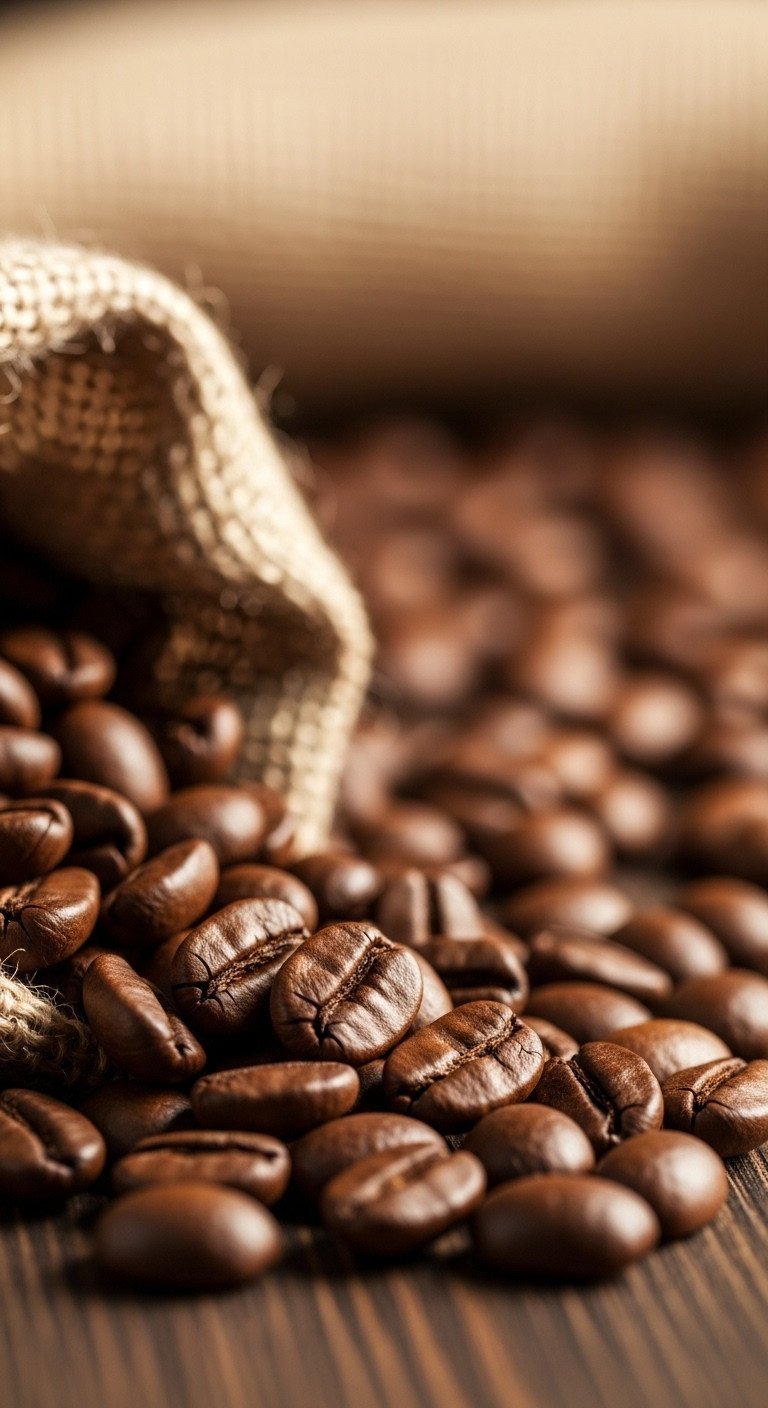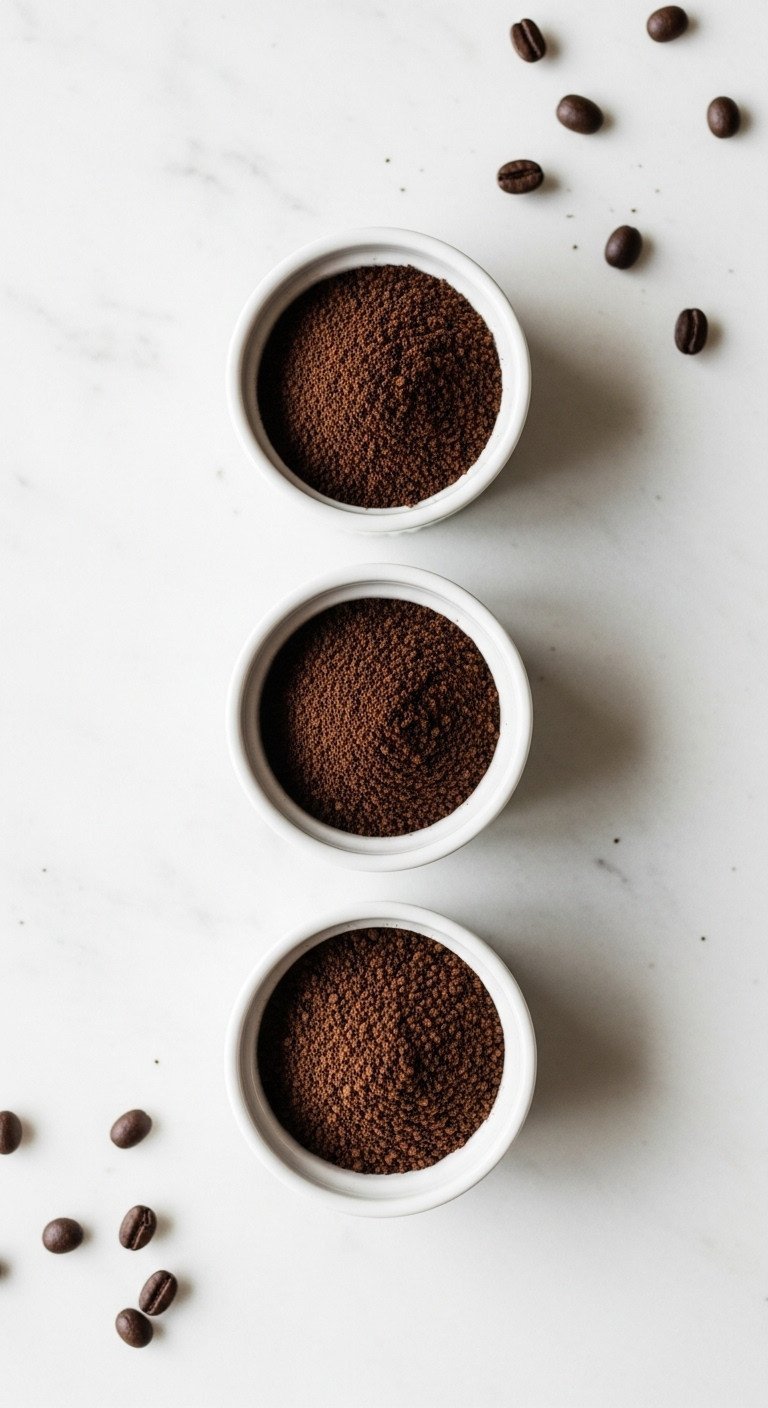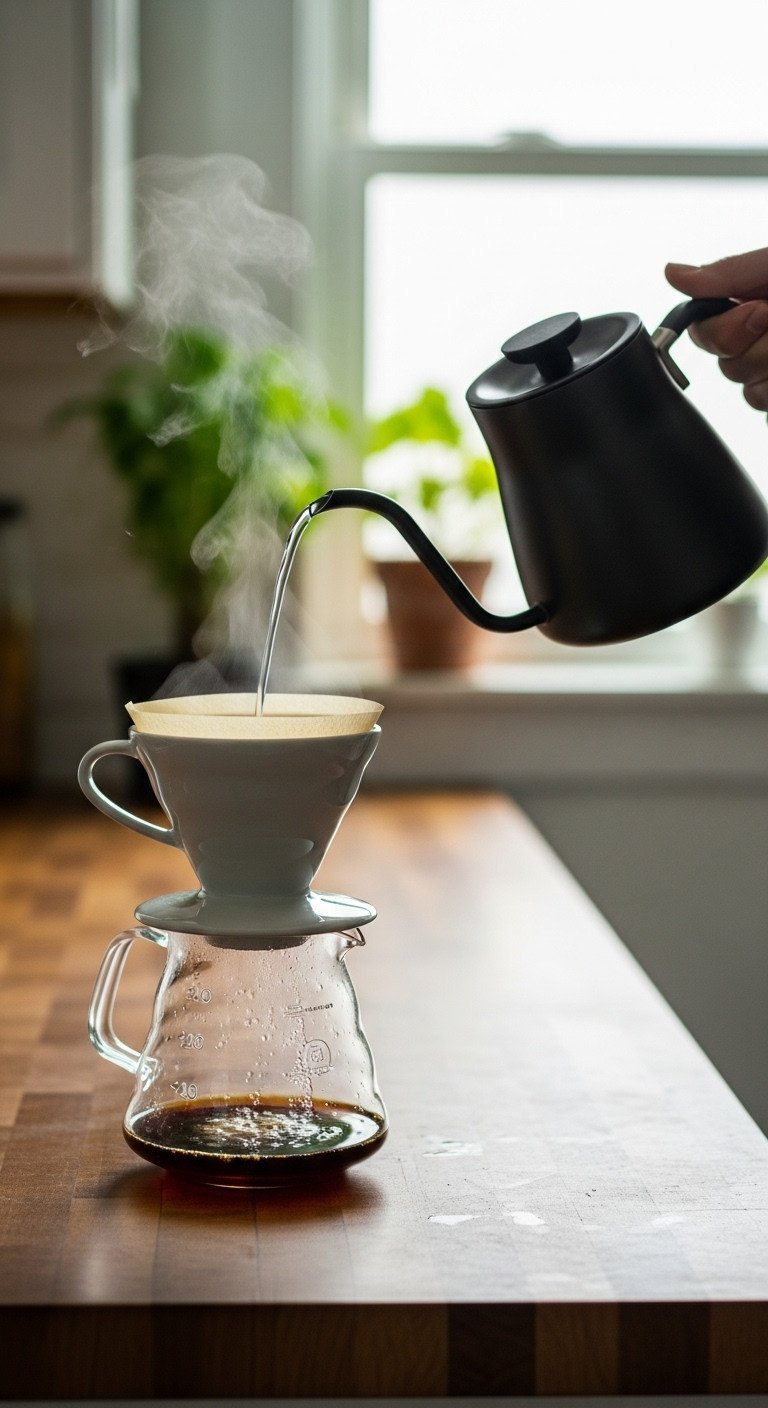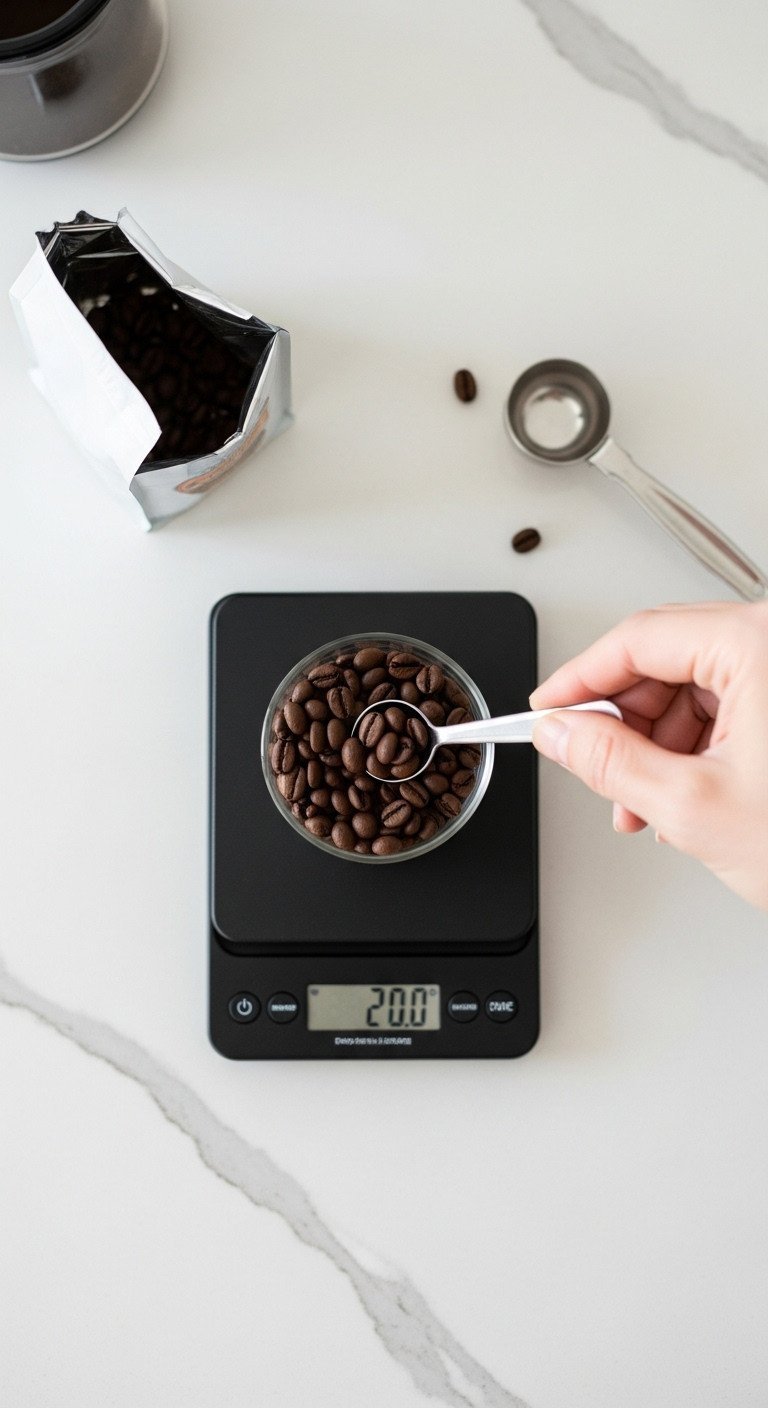As an Amazon Associate CoffeeXplore.com earns from qualifying purchases.
How To Make Coffee At Home By Mastering The 4 Fundamentals
Ever wonder why your homemade coffee never tastes like the one from your favorite cafe? You buy good beans and follow the steps, but it still comes out weak or bitter.
It’s a common frustration, but it’s not your fault. The process of home coffee brewing can seem complex, with endless variables. You’re trying to achieve cafe-style coffee quality, but the path isn’t clear.
The secret to making great coffee at home isn’t a fancy machine, but mastering four fundamentals. This guide will show you how to control these core principles. You’ll learn the simple secrets to brewing a consistently delicious cup every single time.
Tired of Bad Coffee? Here’s Why It’s Not Your Fault
So many guides on how to make coffee at home jump straight to confusing brewing methods. They assume you already know the basics, leaving you with weak, bitter, or just plain disappointing results. This can make you feel like great coffee is an expensive, out-of-reach luxury.
We’ve been there, too. The real breakthrough in our coffee journey came from ignoring the complex techniques and focusing on the core of what makes coffee taste good. It’s not about the brewer; it’s about the brewing variables you control before the water even hits the grounds.
This guide will demystify the process. We’ll show you the four simple, easy-to-master fundamentals that professional baristas use. Understanding these is the true secret to making better tasting coffee that rivals your local cafe, right in your own kitchen.
How To Make Coffee At Home By Mastering The 4 Fundamentals
Before you even think about choosing between a French press or a pour-over, you need to understand the four elements that dictate the final taste in your cup. Mastering these brewing variables is what separates an average cup from an amazing one. According to the Specialty Coffee Association (SCA), these principles are the foundation of brewing, and they apply to any coffee maker you use.
Here are the 4 fundamentals of great home coffee brewing:
1. The Beans: Start with fresh, high-quality whole beans.
2. The Grind: Match your coffee grind size to your specific brew method and time.
3. The Water: Use clean, filtered water heated to the correct temperature.
4. The Ratio: Accurately measure your coffee and water using a scale for consistency.
1. The Beans: The Foundation of All Flavor

Pin this essential coffee tip to your “Coffee Lovers” board!
Key Concepts & Tools:
- Freshness is Key: Great coffee starts with fresh roasted coffee beans. Always look for a “roasted on” date on the bag, not just an expiration date. For the best flavor, aim to use your beans within three weeks of this roast date.
- Whole Bean vs. Pre-Ground: Always choose whole bean coffee. Once coffee is ground, it starts to lose its volatile aromatic compounds rapidly, with flavor degrading in as little as 30 minutes.
- Roast Levels Explained: The roast level dramatically impacts flavor. Light roasts are brighter and more acidic, showcasing the bean’s origin. Dark roasts are bolder with more “roasty” notes. For beginners, a medium roast is a perfectly balanced starting point.
- Storage: To maintain freshness, an opaque, airtight container stored at room temperature is your best friend. Never store your coffee beans in the fridge or freezer, as moisture can ruin them.
Actionable Steps:
- Find a Local Roaster: The best source for truly fresh coffee is a local roaster. A quick online search will likely reveal several options in your area.
- Read the Bag: Look at the roast date and the tasting notes. Descriptions like “chocolate, nutty, citrus” can help you find a flavor profile that sounds appealing to you.
- Choose a Medium Roast: If you’re not sure what you like, a “medium roast” or “breakfast blend” is a fantastic and forgiving choice. Beans from Colombia or Brazil are often crowd-pleasers.
- Store Properly: When you get home, move your beans into an airtight container and place it in a cool, dark cupboard away from light and heat.
Pro-Tip: Avoid buying coffee from the bulk bins at grocery stores. While it may seem like a good deal, those beans are constantly exposed to light and oxygen, which makes them stale long before they ever reach your cup.
2. The Grind: Unlocking Flavor with Consistency

Save this grind size cheat sheet for later!
Key Concepts & Tools:
- Extraction Explained: Brewing coffee is a process of extraction—dissolving flavor from the grounds into water. The coffee grind size determines the speed of extraction. A fine grind has more surface area and extracts quickly, while a coarse grind has less and extracts slowly.
- The Golden Rule: Match your grind size to your brew time. Long brew methods like the French press (4 minutes) need a coarse grind. Short brew methods like espresso (30 seconds) need a fine grind.
- Burr Grinder (The Hero): A burr grinder is a tool that uses two revolving abrasive surfaces to crush beans into a uniform, consistent grind size. This is the single most important piece of equipment you can buy for better coffee.
- Blade Grinder (The Villain): A blade grinder uses a spinning blade to smash beans randomly. This creates a mix of fine dust and large chunks, which leads to an unbalanced extraction that is both bitter (from the dust) and sour (from the chunks) in the same cup.
Actionable Steps:
- Invest in a Burr Grinder: An entry-level manual burr grinder offers a massive quality improvement over any blade grinder and is the best place to start.
- Learn the Textures: Get familiar with the feel of different grinds. A coarse grind should look and feel like coarse sea salt. Medium should be like granulated sugar, and fine should resemble table salt.
- Grind Right Before Brewing: This is a non-negotiable step. Measure your whole beans first, then grind only the amount you need for the cup you are about to make.
- Start with the Recommended Setting: Most grinders provide a chart with starting points for different brewers. Use this as your guide and adjust based on taste to dial in your grind perfectly.
Lesson Learned: My coffee was inconsistent for years because I used a blade grinder. The day I switched to a burr grinder was the biggest “aha!” moment in my coffee journey. The improvement in taste and consistency was immediate and undeniable.
3. The Water: The Overlooked 98% of Your Cup

Pin this simple trick for instantly better coffee!
Key Concepts & Tools:
- It’s 98% of Your Drink: Water is the main ingredient in your coffee. If your tap water has off-tastes from chlorine or other impurities, your coffee will inherit them. High-quality water is crucial for flavor clarity.
- Temperature is Crucial: The ideal water temperature for coffee extraction is 195-205°F (90-96°C). Using boiling water (212°F) will scorch the grounds and create a harsh, bitter taste. Water that is too cool will result in a flat, weak, and sour cup.
- Tools for Success: The best tools for the job are a simple water filter pitcher and an electric kettle. An electric gooseneck kettle with temperature control is a fantastic upgrade that gives you ultimate precision.
Actionable Steps:
- Filter Your Water: Always start with cold, filtered water for coffee. A basic pitcher-style water filter makes a significant and immediate difference by removing chlorine and other unwanted flavors.
- Heat it Correctly (No Thermometer Method): The simplest way to hit the right temperature is to bring your water to a full boil, then take it off the heat and let it rest for 45-60 seconds. This will bring it down into that perfect 195-205°F brewing temperature range.
- Heat it Correctly (With a Kettle): If you own a variable temperature kettle, simply set it to 200°F. This is an excellent all-purpose starting temperature for nearly any brewing method.
- Taste the Difference: As an experiment, brew two cups side-by-side: one using tap water and one with filtered water. The improvement in sweetness and the absence of off-tastes will be instantly clear.
Pro-Tip: Before you start brewing, pour a little of your hot water into your mug or carafe and swirl it around. Dumping this water out before you brew pre-heats the vessel, keeping your final cup of coffee hotter for much longer.
4. The Ratio: Your Recipe for Perfect Strength

Save this coffee ratio guide to brew the perfect cup!
Key Concepts & Tools:
- Weight, Not Volume: Using a scoop to measure coffee is a recipe for inconsistency. Different beans have different shapes and densities, meaning a scoop of light roast weighs more than a scoop of dark roast. A digital scale that measures by weight is the only way to guarantee a consistent brew ratio.
- The Golden Ratio: To ensure proper strength, the Specialty Coffee Association (SCA) suggests a “golden ratio” of 1:15 to 1:18. This simply means using 1 gram of coffee for every 15 to 18 grams (or milliliters) of water.
- A Great Starting Point: A 1:17 ratio is the perfect place to start your coffee brewing journey. It produces a balanced, flavorful cup with most brew methods and beans. For example, 20 grams of coffee to 340 grams of water.
- The Essential Tool: A basic digital kitchen scale is a non-negotiable tool for achieving consistency. This simple device is more important than any fancy brewer.
Actionable Steps:
- Get a Digital Scale: You don’t need an expensive one. Any kitchen scale that measures in grams will work perfectly.
- Start with the 1:17 Ratio: For a standard 12-ounce mug, begin by weighing out 20 grams of whole bean coffee.
- Calculate Your Water: Multiply your coffee dose by 17. In this case, 20g of coffee x 17 equals 340g of water.
- Measure Everything: Place your brewer on the scale and press the “tare” button to zero it out. Add your ground coffee. Tare it again. Slowly pour in your hot water until the scale reads your target weight of 340g.
- Adjust to Taste: The best part of this process is that you’re in control. If your coffee is too strong, try a 1:18 ratio next time. If it’s too weak, try 1:16. This is how you “dial in” your perfect recipe.
Pro-Tip: Use your phone’s calculator to make the math effortless. Once you find a brew ratio you absolutely love (like 22g of coffee to 375g of water), write it down so you can replicate it perfectly every day!
Key Takeaways: Your 60-Second Guide to Better Coffee
- Buy Fresh, Whole Beans: Always look for a “roast date” on the bag and use it within three weeks for the best flavor.
- Grind Right Before You Brew: A consistent grind is crucial. A burr grinder is the best investment you can make for your coffee quality.
- Use Filtered Water (Not Boiling): Your coffee is 98% water, so make it clean. Bring water to a full boil, then let it cool for about one minute before pouring.
- Use a Scale: For repeatable, consistent results, measure your ingredients. Start with a 1:17 coffee-to-water ratio by weight.
People Also Ask About Making Coffee At Home
What is the easiest way to make good coffee at home for a beginner?
The French press is widely considered the easiest method for beginners. It’s inexpensive, the technique is very forgiving, and cleanup is simple. You just combine coarse-ground coffee and hot water, wait 4 minutes, and press the plunger. It produces a rich, full-bodied cup and is a fantastic way to experience the benefits of using good beans and the right ratio.
Why does my coffee taste bitter, and how do I fix it?
Bitter coffee is usually a sign of over-extraction. This means you’ve pulled too many of the bitter compounds from the grounds. To fix it, try one of these three things: 1) use a coarser grind, 2) reduce your brew time (e.g., steep for 3.5 minutes instead of 4), or 3) use slightly cooler water.
Do I really need an expensive coffee grinder?
You don’t need an expensive grinder, but you do need a burr grinder. Inexpensive blade grinders chop beans unevenly, leading to a mix of bitter and sour flavors. An entry-level manual burr grinder can be found for under $40 and will provide a much more consistent grind, resulting in a significantly better-tasting cup of coffee than a blade grinder.
How can I make coffee without any special equipment?
You can easily make coffee using a simple saucepan. Bring your desired amount of water to a near-boil. Remove it from the heat, stir in your coffee grounds (a medium grind works well), and let it steep for about 4 minutes. Then, very slowly and carefully pour the coffee into your mug, leaving the majority of the grounds behind in the pot.
Final Thoughts
Making amazing coffee at home isn’t about buying the most expensive machine or mastering complicated science. It’s about empowerment. It’s about understanding that you have control over four simple, fundamental variables: the beans, the grind, the water, and the ratio.
By focusing on these pillars, you can create a daily ritual that is both rewarding and delicious. You now have the knowledge to troubleshoot a bad cup and consistently replicate a great one.
This week, pick just one of these fundamentals to focus on. Maybe it’s finally buying a digital scale or seeking out a bag of freshly roasted beans from a local shop. Experience the difference for yourself.
What’s the first change you’re going to make to your coffee routine? Let us know in the comments
Last update on 2025-12-15 / Affiliate links / Images from Amazon Product Advertising API

